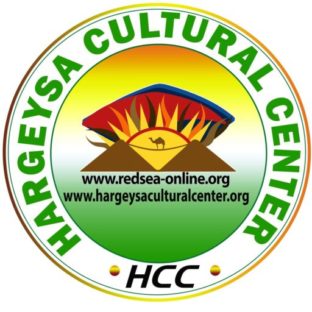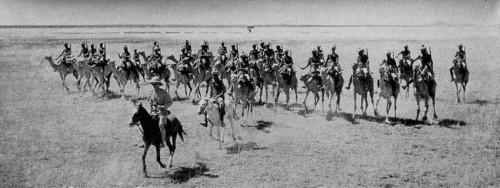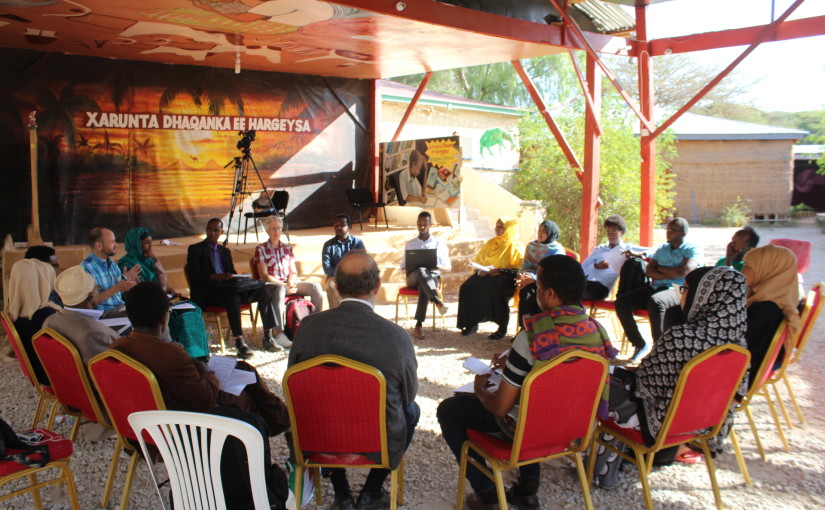 By Dr. Adan Yusuf Abokor
By Dr. Adan Yusuf Abokor
Redsea Cultural Foundation presented on the evening of 10th Feb 2016 ‘Somaliland Camel Corps: The Forgotten Soldiers’ at Hargeysa Cultural Centre. This one-hour documentary, produced by Iman Sheel alongside with Sahan Society Centre in the UK, pays tribute to all the Somaliland heroes who fought during the First and the Second World Wars, whose courage, loyalty and commitment to the cause was extraordinary but whose stories have, unfortunately, not always been given the recognition they deserve.
The interest of the British in Somaliland came when the British colonized Aden as a calling point for the ships to India. Richard Dowden from the Royal African Society said that in the nineteenth century, it was all about India and India was the jewel in the British Crown. Since the Suez Canal was constructed that route to the Red Sea became vital and Aden became the military point to protect that route to India. But Aden could not feed itself and that is why the British found Somaliland as the source of meat for its forces in Aden. In 1888 during the demarcation, Djibouti became French Somaliland, the North became British Somaliland Protectorate and the South was known as Somali Italian.
The Somaliland Camel Corps were formed by the British in 1914 and between 1914 and 1940 they were used to protect the Protectorate from the foreign invasion. According to Hamish Wilson, a Historian and the son of Eric Wilson, the Protectorate was administered by two dozen British mostly military men, who were eccentric and who elected to work in Somaliland.
Haji Osman, the first Governor of Somaliland and a member of the Somaliland Camel Corps, said that the British when recruiting Somali soldiers, they had criteria which indicated that the candidate should be tall and healthy. Many applied but those who were tall and healthy were recruited. The Somalis applied because they needed the job and anyone who got the job will let his family take care of their livestock while he fulfilled his duty as a member of the Somaliland Camel Corps. Dowden added that the Somali joined the army because they wanted to prove that they are warriors and they had a tradition of looting each other’s camels.
The Somaliland Camel Corps were not more than one thousand and not all of them fought in the Great Wars because some of them were stationed in Borama, others were in Hargeisa or Burao.
The British Army commander in the protectorate was disappointed with how the Camel Corps were under-equipped and in 1940 the Corps became mechanised and before the goal was achieved the funds dried up.
Eric Wilson was born in Sundown and joined the military academy “Sandhurst”. With the rank of second Lieutenant he was commissioned to East Africa in 1933 and promoted to Lieutenant in 1936 when he joined the battalion of the King’s African Rifles. During his service in East Africa, Wilson met Omar Kujoog who became very close friend’ and where the fate will change and a strong link between Omar Kujoog and Wilson families were formed.
In 1940, the Italian forces from Abyssinia attacked and outnumbered the British colonial garrison in the protectorate and the British forces moved to an area called Tug gardan. Between 11th and 15th August 1940, Wilson and Omar Kujoog took a strategic position at a hill known as the observing point which was near the only road which the Italian forces can take. Then Wilson and Omar Kujoog saw hordes of “reer Miyi” (pastoralists) running away from the Italian soldiers with their livestock towards the British forces seeking protection because if the Italians seized their animals they would confiscate them or ate them. Eric Wilson realised that it was so painful for Omar Kujoog and other Somalis to watch such a scene without helping their kinsmen because they were well trained, they remained at their posts
The Italian soldiers who outnumbered the British started running towards the hill attacking the position of Wilson and Omar Kujoog.
In the beginning the Italians were using their inventory forces and later they were joined by the artillery and firing towards Wilson and Omar Kujoog were massive and non-stop. Omar Kujoog became so excited and shouting he pointed his gun towards the Italians and continued to shoot until his gun became so hot. At this moment the Italians fired at the position of Wilson and Omar Kujoog and that shell killed Omar and injured Eric Wilson, who lost one ear and his arm fractured. Later the other Somalis took the body of Omar Kujoog and buried him.
Eric Wilson injured and abandoned by the British forces, was found by the Italians and because the Italians were so disorganised they took Wilson to Jijiga, Ethiopia, and put him in a hospital where he was treated. After recovering from his injuries, Wilson was transferred to the borders of Ethiopia and Eritrea where he was kept as a prisoner of war. Until then the British were not informed about Wilson and he was considered by the British as dead and he was offered a Medal posthumously.
Eric Wilson was captive until 1941 when he returned to Britian and he was awarded the Victoria Cross in 1942. Wilson considered that he should share the Victoria Cross with Omar Kujoog and the other Somali heroic who lived or died at the battle field in Somaliland Protectorate.
Suleiman Omar Kujoog, the son of Omar, was one year old when his father died and when he reached the age of 7 and 8 years he realised that his father died during the war. Ever since, he inquired about his father from anyone who knew him. Most of all he was told about his father’s skills in leadership and his bravery. Suleiman said that Eric Wilson knew his father better than anyone else. In 1949, he went to school. He came from the rural areas and all he had was a piece of cloth around his waist (ma’awis).
“In the late days of Eric Wilson”, said his son Hamish Wilson, “someone called my father asked whether my father was Eric Wilson and when he replied positively the caller asked whether my father knew Omar Kujoog and my father replied how can he forget him, some of the shells that killed Omar are still stick in his side of the body”, the caller replied that he is Omar’s eldest son, Hussein, and that he is in London. Hamish continued and said that he and his father went to the station (6 miles away) to meet Omar’s son and as soon as he met him he realised that he met an uncle whom he heard about for a long time. Ever since that moment Eric Wilson and Omar Kujoog families kept a bond for generations and even nowadays Hamish’s children and Omar Kujoog great grandchildren play together in the farm owned by Hamish where he established “Degmo”.
Hamish in the late 80’s visited Somalia with the intention of visiting the place where Omar Kujoog was killed and his father Wilson was injured. Hamish bicycled from Mogadishu to Hargeisa in the North and again travelled by bicycle from Berbera (the major seaport of Somaliland) to Dacarbudhuq (half way to Hargeisa) and visited the stone Monument (1939-1944)built in memory of those who fought the Italians in 1940.
It is mentioned that the British did not recognise or did not show any gratitude for the contributions of the Somalis who died defending the British Empire in WW I and II. Richard Dowden mentioned that mostly those who fought for the British from Canada, South Africa, Australia (the whites) were mostly mentioned in remembrance but not the Africans. Suleiman Omar Kujoog mentioned that nothing was given to the family of Omar Kujoog. He remembers that his mother was once given 1000 rubees (Indian/East African currency during the colonial days) and he had a free education up to his secondary school but he mentioned that is nothing compared to what those who fought for the French and other colonial powers received.
Hamish mentioned that when his father had an interview or a talk about his experience during the war and about his Medal, he always mentioned the contribution of the Somalis and especially Omar Kujoog. He also mentioned that if Omar Kujoog has lived, he would have been by his side to share the Medal. The Wilson family whenever they have the opportunity they talk about Omar Kujoog and especially on Hamish’s farm where Somali-British visit “Degmo Centre for Heritage & Culture” to spend the weekend and their children learn about the Somali culture especially the rural areas.
In 2002, Queen Elizabeth II opened a Memorial (Memorial Gates) to remember those who died for a country which they have never seen. Eric Wilson was invited and he invited Suleiman Omar Kujoog where he had the opportunity to meet the Queen. Suleiman said that when he met the Queen, he had a mixed feeling of emotions. For others, it was a joyous occasion and time to celebrate but for him it was time to grieve because he lost his father at the age of one year. Let us not forget the words of Kipling inscribed on the Memorial “For the forgotten men of the Colonial Service”
Haji Osman of the Somaliland Camel Corps said that every child must remember the sacrifice his father and great grandfathers accomplished. People in Somaliland fought for the British in WW I in Tanganyika and WWII in Somaliland Protectorate and as recent as 1982 as sea-farers fought in the Falklands.
Feb 2016


